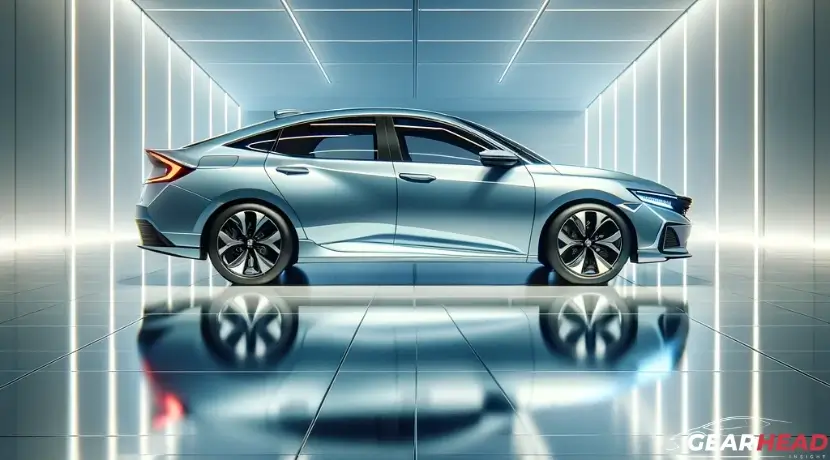The 2025 Honda Civic: A Deeper Dive Into Curb Weight And Its Implications
By admin / July 28, 2024 / No Comments / 2025

The 2025 Honda Civic: A Deeper Dive into Curb Weight and Its Implications
The Honda Civic, a perennial favorite in the compact car segment, has consistently impressed with its blend of practicality, fuel efficiency, and driving dynamics. As we approach the 2025 model year, anticipation is high for the latest iteration of this iconic car. While official specifications are still under wraps, understanding the potential curb weight of the 2025 Civic is crucial for discerning buyers. This article delves into the significance of curb weight, explores the factors influencing it, and examines how the 2025 Civic might stack up against its predecessors and competitors.
What is Curb Weight?
Curb weight refers to the total weight of a vehicle as it sits on the ground, fully equipped, but without any passengers, cargo, or fluids. It’s a critical metric for understanding a car’s performance, fuel economy, and handling characteristics.
Why Curb Weight Matters
1. Performance and Acceleration: A heavier car requires more power to accelerate, leading to slower 0-60 mph times and a less spirited driving experience.
2. Fuel Economy: A heavier vehicle needs more energy to move, resulting in lower fuel efficiency.
3. Handling and Braking: A lower curb weight translates to better handling, quicker steering response, and shorter braking distances.
4. Suspension and Tires: A heavier car puts more stress on its suspension components and tires, potentially leading to faster wear and tear.
Factors Influencing Curb Weight
Several factors contribute to a car’s curb weight:
- Platform and Body Structure: The underlying platform and body construction materials play a significant role. Lighter materials like aluminum and high-strength steel can reduce weight.
- Engine and Transmission: A larger and heavier engine will naturally increase curb weight. Similarly, a complex transmission with multiple gears can add weight.
- Safety Features: Advanced safety features like airbags, electronic stability control, and collision avoidance systems often add weight.
- Interior Features and Comfort: Leather upholstery, heated seats, and premium sound systems can contribute to a heavier vehicle.
- Wheels and Tires: Larger and heavier wheels and tires will increase curb weight.
The 2025 Honda Civic: Predictions and Considerations
While official details are scarce, we can speculate about the 2025 Civic’s curb weight based on trends in the automotive industry and the model’s history.
1. Platform and Body Structure: The 2025 Civic is expected to utilize the latest iteration of Honda’s global compact car platform. This platform is likely to incorporate advanced lightweight materials, potentially reducing curb weight compared to the current model.
2. Engine and Transmission: The 2025 Civic will likely offer a range of powertrains, including a naturally aspirated gasoline engine, a turbocharged option, and potentially a hybrid variant. The choice of engine and transmission will directly impact curb weight.
3. Safety Features: Honda has a reputation for prioritizing safety, and the 2025 Civic is expected to be equipped with a comprehensive suite of advanced safety features. These features, while beneficial, can contribute to a slightly higher curb weight.
4. Interior Features and Comfort: The 2025 Civic is likely to offer a range of interior trim levels, with higher trims featuring more luxurious features and potentially adding weight.
5. Wheels and Tires: The 2025 Civic is likely to offer a variety of wheel and tire options, with larger and heavier wheels and tires increasing curb weight.
Comparison with Previous Generations and Competitors
The 2025 Civic’s curb weight will be crucial for its competitive positioning within the compact car segment.
1. Previous Generations: The 2022 Honda Civic’s curb weight ranged from 2,800 to 3,000 pounds depending on trim level and powertrain. The 2025 model is likely to be within a similar range, potentially with slight adjustments due to the use of new materials and technologies.
2. Key Competitors: The 2025 Civic will face stiff competition from other compact cars like the Toyota Corolla, Mazda3, Hyundai Elantra, and Kia Forte. These competitors also offer a range of powertrains and trim levels, impacting their curb weight.
Conclusion: Curb Weight and its Impact on the 2025 Civic
Curb weight is a crucial factor influencing the performance, fuel economy, and handling of a car. While the exact curb weight of the 2025 Honda Civic remains unknown, it’s likely to be within a similar range as the current model, with potential adjustments due to the use of new materials and technologies.
The 2025 Civic’s curb weight will be a key factor in determining its overall appeal and competitiveness within the compact car segment. A lighter weight could offer improved acceleration, fuel economy, and handling, making it a more desirable choice for driving enthusiasts. However, the addition of advanced safety features and luxurious amenities could lead to a slightly higher curb weight, potentially affecting its fuel economy and performance.
Ultimately, the 2025 Honda Civic’s curb weight will be a balancing act between performance, fuel efficiency, and safety. The final outcome will be closely watched by automotive enthusiasts and consumers alike, eagerly awaiting the release of this iconic car.







